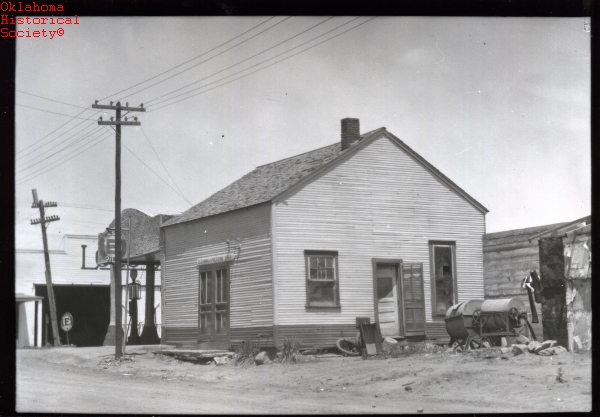SWANSON COUNTY.
Swanson County had a turbulent history in its short life from August 13, 1910, to June 27, 1911. On May 2, 1910, an election was held in southern Kiowa and western Comanche counties regarding the formation of a county to serve that area's population. Overall, 60 percent of the voters favored creating a new county. However, the majority of Comanche County citizens had vetoed the issue. Snyder citizens in Kiowa County had solicited unregistered voters to gain a favorable vote for the new county. Gov. Charles N. Haskell accepted the total vote and issued a proclamation on August 13, 1910, calling for the creation of Swanson County (named for his friend, Gov. Claude Swanson of Virginia) and designating Mountain Park as the temporary county seat.
Competition arose between Snyder and Mountain Park for the seat. Snyder citizens claimed that their town was better suited because Mountain Park lacked a water system, fire protection, and office space for county officials. After dark on September 5, 1910, Snyder citizens removed the records from Mountain Park when a rainstorm soaked the documents housed there. In retaliation, Mountain Park men invaded county officials' homes and arrested the officials at gunpoint. Wyatt L. Staples, who worked for one of the county commissioners, was killed.
Despite the fact that feuding between Mountain Park and Snyder continued and a suit to dissolve the new county was filed by Comanche officials in the district court, county business proceeded. In November 1910 Swanson County voters elected James V. McClintic to represent them in the state legislature, and teachers formed a county teachers' association.
On March 7, 1911, Oklahoma's Supreme Court ruled that Mountain Park was the official county seat. Soon afterward, on June 27, 1911, it affirmed the district court's decision that Swanson County be dissolved, because in the May 1910 election the new county had not been approved by a majority of 60 percent in each of the two counties. The court ordered that the county records be moved to Hobart, Kiowa's county seat. With Swanson County's demise, Cotton County, formed from southern Comanche County in 1912, became Oklahoma's seventy-seventh county.
See Also
Learn More
Daily Oklahoman (Oklahoma City), 8 March 1911 and 5 July 1931.
Governor's Papers, Governor Charles N. Haskell, Administrative Papers, Swanson County File, Archives, Oklahoma Department of Libraries, Oklahoma City.
Emily B. Smith, "Swanson County," The Chronicles of Oklahoma 9 (December 1931).
"Swanson County," Vertical File, Historic Oklahoma Collection, Western History Collections, University of Oklahoma, Norman.
"Swanson County," Vertical File, Research Division, Oklahoma Historical Society, Oklahoma City.
Citation
The following (as per The Chicago Manual of Style, 17th edition) is the preferred citation for articles:
Linda D. Wilson, “Swanson County,” The Encyclopedia of Oklahoma History and Culture, https://www.okhistory.org/publications/enc/entry?entry=SW002.
Published January 15, 2010
© Oklahoma Historical Society


